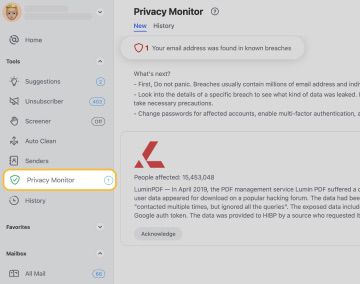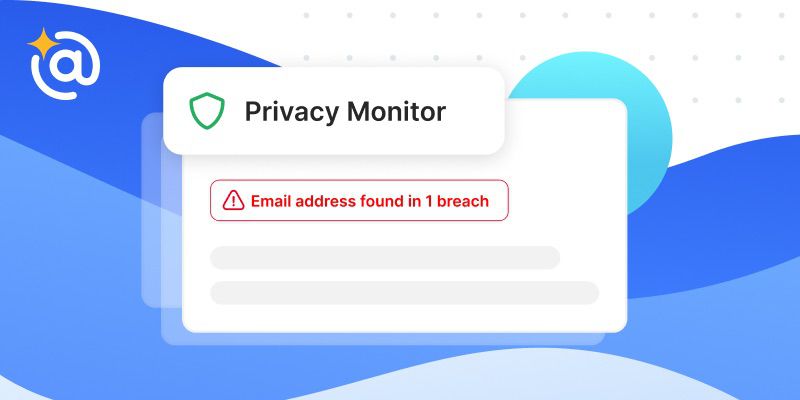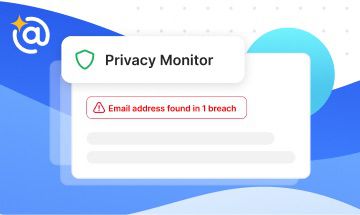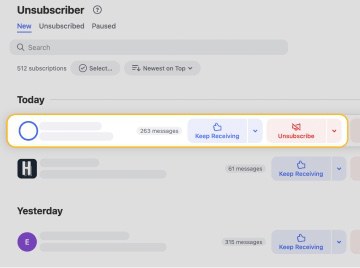What Is Data Leak?
Most of us use the internet on a daily basis for professional and personal purposes. In fact, the average person sends at leave 40 emails per day and receives many more than that. Unfortunately, anytime we send or receive data through our inbox, we put ourselves at risk to vulnerabilities that can compromise our personal information.
A data leak occurs when sensitive data is accidentally exposed in some way. These leaks put personal information such as email addresses, passwords, or even banking information into the hands of cyber criminals without any consent or effort. Although these leaks can sometimes happen through a cyber attack, they often occur because of poor security practices or inaction that allows vulnerabilities to take place.
Why Do Data Leaks Happen?
Unfortunately, many factors can contribute to a data leak. Sometimes, hackers use malicious methods to obtain the data they want, like compromised passwords. Other times, these leaks occur due to our own poor security practices or lack of knowledge of security practices.
However, understanding the different ways data leaks can happen will help you enhance your data leakage prevention measures going forward.
Malicious Methods That Cause A Data Leak
Malicious data breaches are leaks that occur due to targeted cyberattacks. In these situations, hackers use their knowledge and coding skills to purposely seek out specific data from individuals or business servers with the intention of using this information for their own personal gain.
In most instances, cyber criminals use one of three main methods to achieve their goal: malware, phishing, or brute force attacks.
Malware is a special software a hacker specifically designs to damage, disrupt, or access your computer. There are several different types of malware, but they all can end up on your computer and wreak havoc before you even realize what has happened. This is what makes malware so dangerous.
Phishing attacks are fraudulent practices designed to trick you into providing the information cyber criminals want. Most of the time, phishers pose as reputable companies or people you trust, then they coax you into giving them personal information or the data they need to access this information. Many of the spam emails you receive on a daily basis are phishing attacks. This is why password security best practices are so important.
Finally, brute force attacks are targeted attacks that hackers launch to obtain data. The most common type of brute force attack is one in which cyber criminals use software to guess your password. Once they have this information, it’s not easy to stop them from logging into all of your accounts and stealing additional information.
Poor Security Practices That Cause Data Leaks
Although many of us would like to believe that our personal information is safe from hackers, the reality is that many of us are guilty of common poor security practices that cybercriminals use to access our information. In fact, these poor security practices and lack of the fundamentals of cyber risk management can lead to data leaks.
The majority of these breaches occur because people use weak credentials to secure their online accounts. These weak credentials include poor password choices, password replication across multiple accounts (i.e. using the same password for all of your online accounts), and not selecting multi-factor authentication options when offered. These choices can cause a compromised password data leak and do not protect your email from getting hacked.
Other poor security practices that get people into trouble include:
- Not checking website security certificates
- Forgetting to update apps or operating systems on devices
- Not logging out of accounts on shared devices
- Using public WiFi networks regularly
- Not taking the necessary steps to ‘hide my email’.
All of these common mistakes leave you vulnerable to data breaches.
How To Prevent Data Leakage
Although data breaches do occur on a fairly regular basis, you can take steps to protect your information from falling into the wrong hands, including secure corporate data. In fact, data leakage prevention isn’t as difficult as you may think.
For example, if you are concerned about a password data leak, you can do the following:
- Set up a password manager that you can use to save passwords to all of your accounts.
- Log into all of your accounts (including social media and email) and change the passwords on each account one by one, making sure they are all different.
- Save each password into your password manager so you don’t have to worry about remembering them all.
Similarly, if you are concerned about an iPhone password data leak or hacking of your device, you can:
- Set up facial recognition or other types of enhanced security on your device.
- Opt in for multi-factor authentication on all accounts that offer it.
- Avoid sharing your phone or laptop password with anyone.
Other steps you can take to prevent data leaks include:
- Setting up auto update features for apps and operating systems on your devices.
- Utilizing a VPN or other types of encryption to protect your data while using the internet.
- Clearing your cache and cookies on a regular basis, plus taking other steps to learn how to delete your digital footprint.
- Using a hacked email checker to determine if your email has been breached.
How Clean Email Can Help You Stay Protected Against Data Leaks
One of the best ways to keep your data safe from a lean is by maintaining inbox safety at all times. Obviously, you can do this by changing your password on a semi-regular basis. However, you can also perform frequent checks to see if your email data was leaked. Luckily for you, Clean Email offers a Privacy Guard feature that lets you do this for completely free.


Privacy Guard checks your email against known data breaches and security incidents. Suppose Privacy Guard finds out that your email was part of a known data breach.


In that case, it will prompt you to change your password, enable multi-factor authentication, use a password manager, and implement other security features. Although you can’t establish these security measures directly within the Clean Email app, you can learn what to do if your email is hacked so you can take the necessary steps to resecure your data.
Clean Email’s Privacy Guard isn’t the only feature that helps you protect your inbox. In fact, this app offers several great features that can help prevent malicious messages from entering your inbox so you can prevent data leaks.
With tools like Unsubscriber, you can remove yourself from distribution lists, block emails from senders who seem suspicious, and even move messages into a separate Read Later folder to sort through on your own time. All of these enhancement measures help organize your inbox, but they also protect your information from falling into the wrong hands.


Best of all, Clean Email is dedicated to keeping your data safe as well. We don't keep, sell, or analyze your data for purposes beyond our public features. And, you can securely remove your data from our servers at any time by using a feature in the application or contacting our support and requesting such a deletion. This will be true even during a corporate merger or corporate bankruptcy.
How to Prevent Data Leakage - FAQs
What is data leak?
A data leak is when your personal information is exposed in some way to strangers online.
What causes a data leak?
There are many issues that can cause a data leak. However, they are commonly caused by poor security practices.
What happens if data is leaked?
When your data is leaked, cybercriminals can access anything from your passwords to banking information or other personal details.
How do you know if your data has been leaked?
Sometimes it’s hard to know if your data has been leaked. However, you can perform a data leak check with tools like Clean Email’s Privacy Guard to find out.
What does it mean when your password has been in a data leak?
If your password has been in a data leak, that means your password information was somehow publicly exposed online, meaning multiple people could have access to it.


